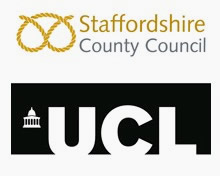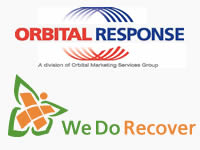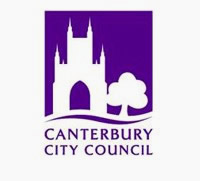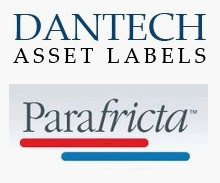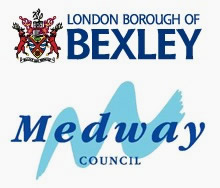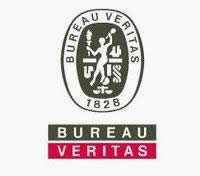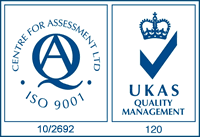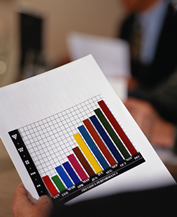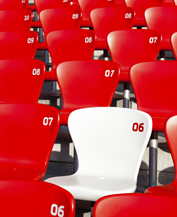Why Web Design Affects SEO (Part 1)
07/02/2013
 A lot of people don’t realise that having a quality website can actually have a much more significant impact on your SEO campaign than your social media, links and article writing all put together. Remember that search engines like Google are businesses like any others and therefore want people to make use of their services. This means they have a genuine commitment to a) making money (like all other businesses) and therefore b) to ensure that the search results they display are highly valuable to real people, not just the search crawling bots.
A lot of people don’t realise that having a quality website can actually have a much more significant impact on your SEO campaign than your social media, links and article writing all put together. Remember that search engines like Google are businesses like any others and therefore want people to make use of their services. This means they have a genuine commitment to a) making money (like all other businesses) and therefore b) to ensure that the search results they display are highly valuable to real people, not just the search crawling bots.
This sort of thinking actually places less focus on inbound links and domain authority and puts the focus firmly on the experience users will have on the website. In the first of this two-part article we’ll take a look at how website visual design can impact your SEO – more to follow later on conversion and site usability.
There’s a very good reason why professional web design exists as an industry – it’s the same reason people don’t try to make their own clothes or build their own houses – which is to get something that looks good and works well (and won’t send the people who see it fleeing to the hills) you need to find someone who is good at it. Fun fact – on average you have less than 2 seconds from the time a user lands on your page in which to convince them to stick around. Political speeches get more leeway than that.
Even the winner of the Guinness Book of Records competition for Speediest Speed Reader Ever is going to run into difficulties in that period of time, so for the initial visitor retention the visual impact of your website becomes critical. Do everything you can to avoid template designs – bespoke is always better anyway – particularly on popular platforms like Wordpress, as the last thing you need is for your visitors to think your site looks familiar and mistake you for somebody else, then bounce off because they don’t think they’re in the right place.
Help Stop Bouncing
 So why does this actually have an SEO impact? Aside from the obvious technical side of things – in that a site poorly coded and built is a pain for search engines to read, and so like lazy teenagers they slope off elsewhere and give preferential indexing to somebody else – poor visual design results in a high bounce rate. A “bounce” is where somebody lands on your website and then immediately ricochets back to the search results page like a bad dodgeball throw, because they’re so put off by your appalling visual impression that they don’t want to click in any further. Search engines detect high bounce rates and come to the conclusion that a website is unpopular with visitors, so to spare other people the pain and anguish of landing on it they will start plummeting you down their average rankings until things start to improve.
So why does this actually have an SEO impact? Aside from the obvious technical side of things – in that a site poorly coded and built is a pain for search engines to read, and so like lazy teenagers they slope off elsewhere and give preferential indexing to somebody else – poor visual design results in a high bounce rate. A “bounce” is where somebody lands on your website and then immediately ricochets back to the search results page like a bad dodgeball throw, because they’re so put off by your appalling visual impression that they don’t want to click in any further. Search engines detect high bounce rates and come to the conclusion that a website is unpopular with visitors, so to spare other people the pain and anguish of landing on it they will start plummeting you down their average rankings until things start to improve.
Stay Speedy
 A second factor which has significant impact on your SEO is your page load time. In today’s modern high-speed internet world nobody is willing to sit around waiting for a page to load as they did in the days of good old dial-up. Head over to something like Pingdom for a rough idea of how fast your site is loading. If it is on the slow side then call in a web developer to speed things up – there’s lots of technical wizardry and compression cleverness that can be done to improve things so no need for despair. High turnover sites with complex apps may even want to look into ongoing website monitoring or testing to ensure regular testing from multiple locations in order to identify server bottlenecks and other problems. If you’re looking into this make sure the testing service has an emphasis on user experience rather than old-fashioned ping testing, as the latter doesn’t take modern on-page interfaces into account and will leave significant holes in testing coverage. Modern web monitoring and user journey experience testing providers like SciVisum are a good bet, and many will also be able to offer general page load and user experience streamlining advice as part of the same service.
A second factor which has significant impact on your SEO is your page load time. In today’s modern high-speed internet world nobody is willing to sit around waiting for a page to load as they did in the days of good old dial-up. Head over to something like Pingdom for a rough idea of how fast your site is loading. If it is on the slow side then call in a web developer to speed things up – there’s lots of technical wizardry and compression cleverness that can be done to improve things so no need for despair. High turnover sites with complex apps may even want to look into ongoing website monitoring or testing to ensure regular testing from multiple locations in order to identify server bottlenecks and other problems. If you’re looking into this make sure the testing service has an emphasis on user experience rather than old-fashioned ping testing, as the latter doesn’t take modern on-page interfaces into account and will leave significant holes in testing coverage. Modern web monitoring and user journey experience testing providers like SciVisum are a good bet, and many will also be able to offer general page load and user experience streamlining advice as part of the same service.
Another useful trick which developers can use is to put the functionally nonessential gubbins like analytics and other third party scripts down at the bottom of the page code. This has two benefits – firstly it helps your SEO by getting your juicier content into the page further up, and it also prevents loading holdups where the page looks like it has stalled just because a third party script is taking too long and preventing the rest of the content from coming in. Remember that as long as the page looks fully loaded from the user’s perspective you should be fine – far better to lose a few clicks’ worth of Analytics data than whole users who bounce off because the script has stalled and stopped things loading properly.
Watch this space for part 2 of this article, where we’ll discuss the other way that your website design can impact the effectiveness of your search engine optimisation efforts – namely by how well it can turn your clicking visitors into paying customers.
If you’re baffled by blogs and lost in links, pick up the phone and call 0330 555 4680 today to find out how Cornish WebServices can help you build a sensible and sustainable set of online marketing to include SEO, PPC, social media and more.
PS we build beautiful websites too!








